Fenix TK45

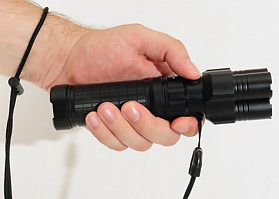
Fenix has done two large lights before TK30 and TK40 both with MC-E led, this time they have selected another solution. The light uses 3xXP-G leds and not even in one head, but with 3 heads, this gives a unique design for the light. The light has four brightness settings and three flashing settings, controlled with two switches. The light is made of aluminum with hard-anodized (Type 3) finish.
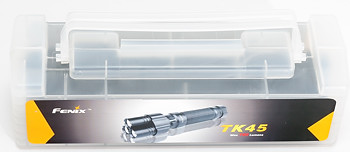
The light arrives in a plastic box with a build in handle.

The content of the box is the light, lanyard, 2xo-rings, a split ring, a warranty paper and a manual.
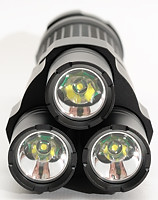
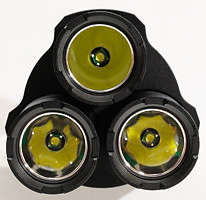

The light has 3 smooth reflectors, each with an XP-G led in. The construction is with 3 separate heads will prevent the light from rolling, but can make it a bit difficult to clean the head.
The low mode uses only one head at a time but will change between them, all other modes uses all 3 heads.
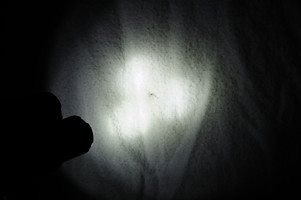
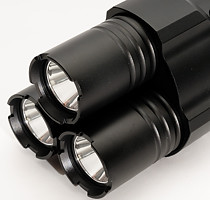
At very close distances it is possible to see the 3 beams, the picture above is at 10 cm where they are starting to overlap, at 1 meter the beam is only one round spot.
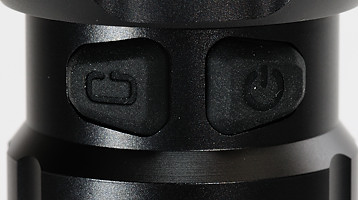
Just behind the head is the two switches, one for power and changing between steady and flashing modes, the other for changing brightness (low to high) or changing flashing mode. Both switches are push buttons without any lock, the actual on/off and brightness setting are controlled electronic. The on switch will change on release, i.e. press and release to turn on or off. When on, do two fast press and release to select flashing modes.
The selected brightness and flashing mode is remembered, but the light will never turn on in a flashing mode, but always in the last selected brightness setting.
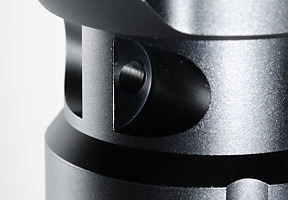
Opposite the switches, the light has a hole for a lanyard.
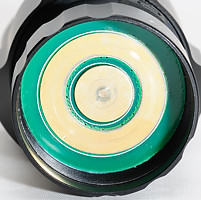
Inside the head are the connections for the power, this light does not use the body for a power connection, both connections are directly from the battery carrier.
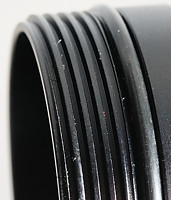
The treads, in both ends of the battery tube, are square and has a o-ring to protect against water. The head goes far enough past the front o-ring, that the weather seal will stay intact, even when the head is loose to lockout the light.
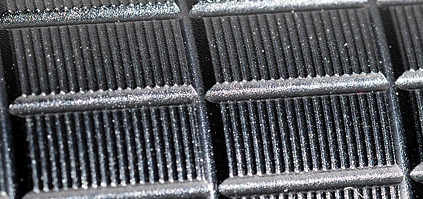
The knurling is done with large squares with texture on. The shape of the light and the knurling gives a good grip.

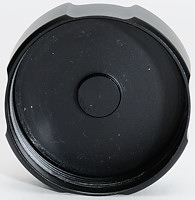
The tailcap is flat and allows tail standing. Inside it does not need any electric connections, but only have to push the battery carrier forward.


The battery carrier needs 8 AA batteries and connects them in series. It is made in plastic with a circuit board in both ends, no metal rods like the TK40 carrier.

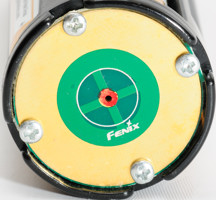
The front end of the carrier has connections to the flashlight head. The center spring is the plus pole and the 4 blades around the center is the minus pole. When replacing the batteries the front end must be kept far away from any metal! The back end is a circuit board without electric contact to the batteries.
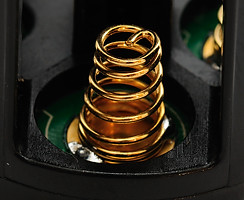
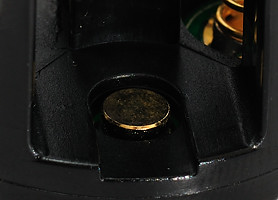
The carrier has no markings with + and - for the batteries, but it is easy enough to find the correct orientation: minus has a spring and plus is a plate. The plate for plus is mounted a bit below the plastic surface, this works as polarity protection.
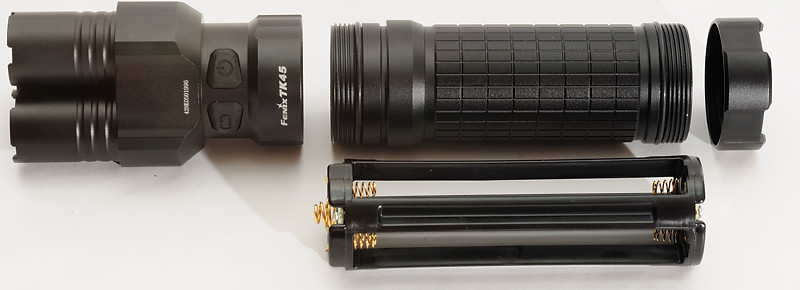
Here are all the parts of the light.
The function of TK45 is very close to TK40, but it has another beamprofile and the switch is moved from the end of the light to just below the head where it is split into two switches. This design change makes for a better user interface, at least if the light is used in a underhand grip. I believe that the 3 heads is more a novelty design, than a practical design, a single head with 3 emitters had been much easier to clean.
As expected from a Fenix the light works well and has a good regulation.
Technical specification and measurements
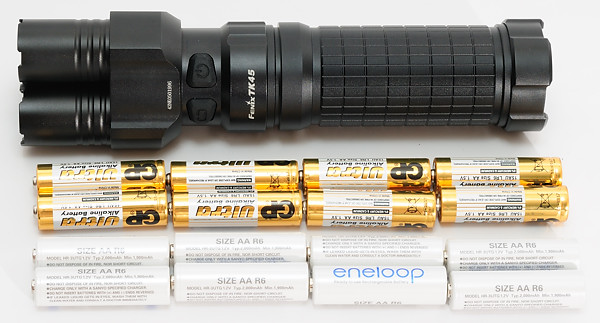
The light can work with alkaline and NiMH batteries and needs 8 pieces.
Measured size and weight:
Length: 202 mm
Diameter: 39.2 to 56 mm
Weight: 516 gram with eneloop
The light uses a 3x Cree XP-G R5 led

In the above table I have collected all modes. I have also included off as a mode, because the light uses a small amount of power. All the estimated runtimes are with eneloop batteries. The estimated lumen are scale from the specified maximum and shows that high and med settings are close to specification, but low is lower than specified. The brightness is a relative measurement from a lux meter or a light sensor (For flashing modes).
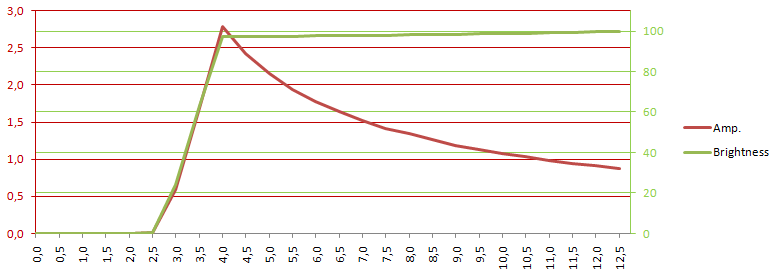
The voltage sweep shows a light with very good stabilizing down to 4 volt. The light is using 10.7 watt at turbo setting, this is below 3.6 watt for each led, i.e. the led are not driven hard.
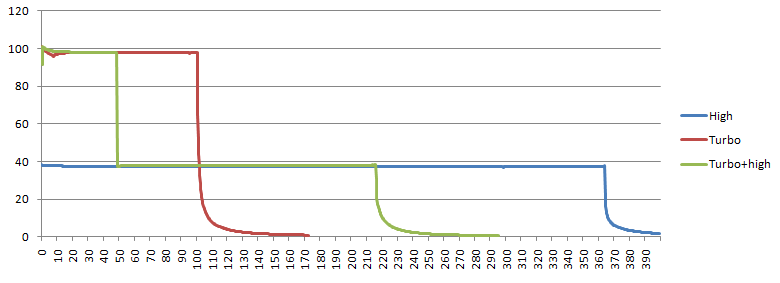
The good stabilization gives a very flat runtime curve, except for a little safety feature in the light. It will automatic change from turbo to high after some time, here it goes down after 49 minutes. To measure how long it could support turbo I just switched the light off/on every 30 minutes to reset the timer.

The light has a very fast strobe at 15.7 Hz with 46% duty cycle, the actual brightness is somewhere between high and turbo.

The sos looks "funny" and the reason is that the regulation is slow to stabilize the output (This flash is not present in low modes). On and off times are around 0.55 seconds and it takes 11.7 seconds to transmit a sos. The time between each sos is about the same as the time between each letter.

The warning flash/beacon has the same initial flash as the sos. It is 2 hz with 50% duty cycle.
Comparison to other Flashlights
JetBeam M2S, Jetbeam RRT-3, Fenix TK40
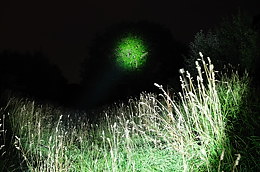
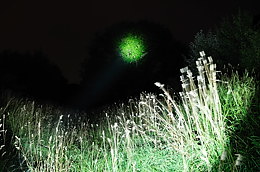
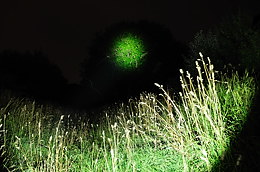
Fenix TK45, ThruNite Catapult, ThruNite Catapult V2

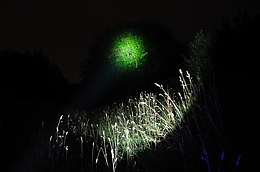
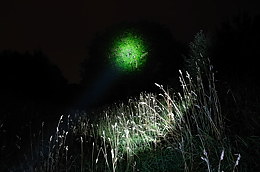
For the full comparison to other lights with graphs and beamshots see here.


































